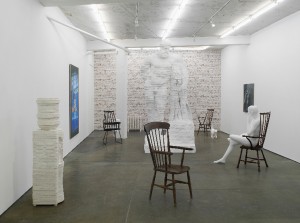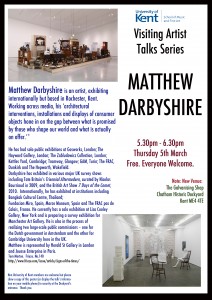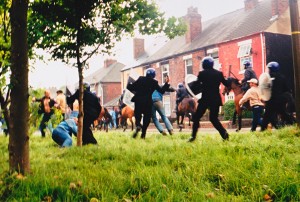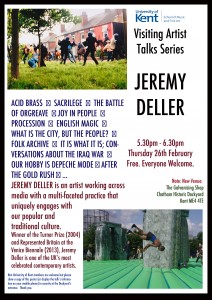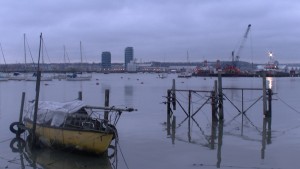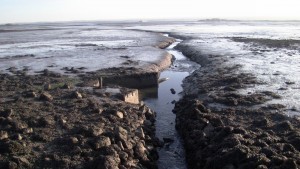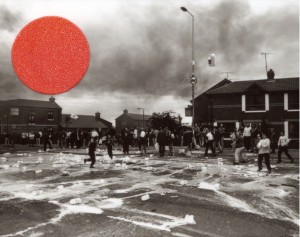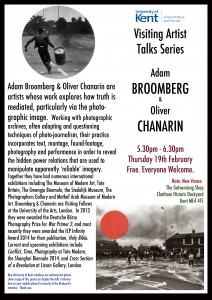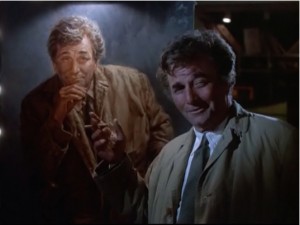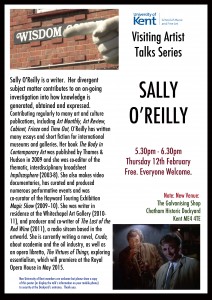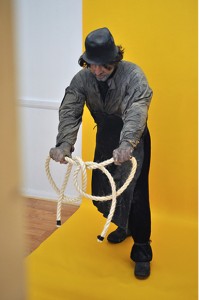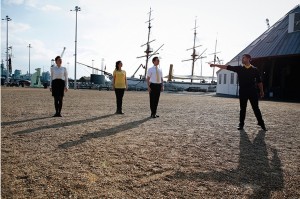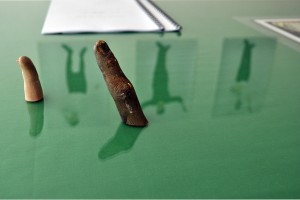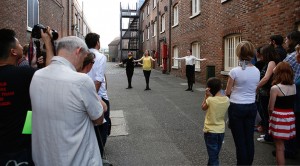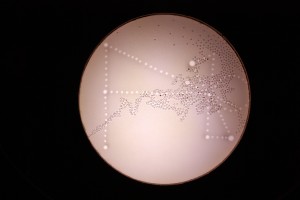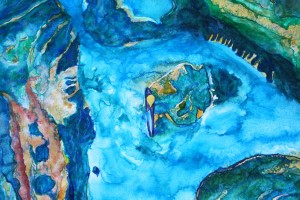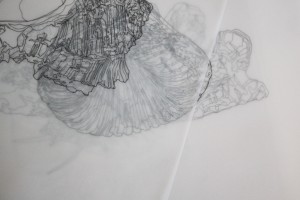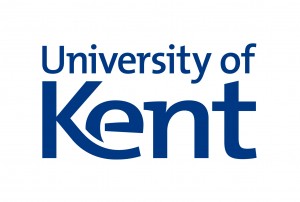TRENTA PER VENTICINQUE
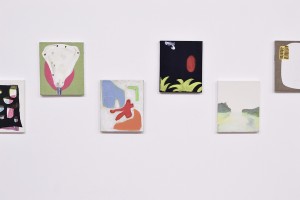 Michael Lawton Trenta per Venticinque, installation view, Foto Vera Portatadino
Michael Lawton Trenta per Venticinque, installation view, Foto Vera Portatadino
Conversation with Michael Lawton
Vera Portatadino: Let’s start with the title of the show. All your paintings are the same size, and this size is 30 x 25 cm. Is there a specific reason for choosing this size? I remember you painting on a larger scale. Do you ever miss that? Do you ever find your 30 x 25 cm scale constraining?
Michael Lawton: Well I allow myself both orientations, so the paintings can either be 30 x 25 or 25 x 30, (though we’ve only shown those in the portrait format here,) and that gives me some scope, it was the reason I rejected a square as my size. To be honest, yes, I sometimes miss painting larger, but I console myself that my smaller work has almost always been better than my large work. Big work seems quite indulgent to me these days. And I can always go back, I’m not saying I painting the same size forever, just for now. Regarding this particular size; there are suggestive things about it for me; books, pages, things that obviously appeal to me as a writer. And it is a size that suggests more if that makes sense? More paintings, more subject, a world outside the frame. As to why I’ve done it; it started as a way out of painting, I got so sick of myself, wondering if I should write or paint, I thought ‘okay I will do one hundred paintings the same size, of anything I want, in any style I want, and see where that takes me.’ I’m now over halfway into that 100 and it has worked in that I know that I want to keep painting, but I’m sticking with the series for now. I feel some loyalty to it as it kept me painting. I guess that it was only two years ago that I realised I would probably be doing this for the rest of my life, painting that is, not necessarily painting the same size.
VP: Your paintings are between abstraction and figuration. You give access to the viewer but nonetheless you leave them with a puzzle to solve. This is something I am very much interested in because I also think there is no use in painting for ‘focal clarity’. In your essay “I Have No Use for the Truth”, you said ‘I am not interested in ‘psychological truth’; what exactly do you exactly mean by this? What do you define as a psychological truth? You go onto say that ‘Paintings can tell stories, reveal psychosis, capture sensation, evoke an atmosphere, but all of these endeavours should be abandoned if the painting demands it: If the painting could be taken somewhere more interesting.’ What is this ‘more interesting’? Can you tell me something more about it and about the kind of questions that you think art should tackle?
ML: I think I meant that I am not interested in painting done for the sake of ‘emotional truth.’ Be it a portrait that is supposed to ‘really get to the heart of the sitter,’ or an abstract that sums up an emotional state. I don’t really buy that. I might like paintings that are described as such, and that might be why the artist made them, what they think their work is about, but I judge it as a painting.
That’s what I was getting at in the second part of that paragraph. If you sit down at your work and start to make a painting about… I’m struggling to think of something… let’s say you have a photograph of a wasp’s nest, this is an abstract shape that I can see would make an interesting painting. Now when you are working on it, something suggests itself that would deviate from the structure in the photograph; some pink perhaps or a hand or sticking on a piece of plastic you found in the street; if the addition of which would make the painting better then it should be added. The painting is then reevaluated; its feel or mood is changed, it is suggestive of something else and the painting should be then taken in that direction. This is also why I say in the statement I don’t really care what makes someone paint; there is no hierarchy of subject matter. It isn’t better or more profound to make a painting about war than it is your pet dog, and nor doesn’t mean the painting will be better. Now these ideas of equivalence of subject matter are hardly radical but I can see how this might read as nihilistic. I don’t see it as such, I am just sure of the edges of what interests me in painting. And conversely I actually want to paint everything. And I am not saying paintings can’t or don’t evoke moods, that is what I am painting for, for that moment when I begin to sense something new and I head in that direction. That is why they are bewitching to make, and (when they are good,) to look at to.
VP: You talk about the unexpected and the beautiful as some kind of starting point, a seducing experience that prompts you to make new work. What do you mean by ‘the unexpected’?
ML: I think I meant that I like seeing new things within paintings, I don’t necessarily mean in painting as in material innovation, just feel there is something I haven’t seen before. This might actually be in fact a trick of composition, perhaps there is a way to resolve a painting compositionally so it always looks unexpected, it always jars?
In terms of my practice I’ve certainly read other painters say something like they paint until they end up somewhere they haven’t been before, and I think I am that kind of painter.
VP: And the beautiful (or the sexy) you talked about, after so many years it has been forbidden to talk about, do you think it’s time we revaluate the role of beauty in art and in the way we engage with reality? What power has ‘the beautiful’ in your mind, if there is any? I actually think the beautiful can be a lot more political than people think.
ML: I don’t know, that is a big question, and one that I am not sure I am interested in. I think that when I wrote that essay, which as you say was a while ago, I listed the beautiful and unexpected as things that make me stop and look at a painting: The more work you make, the more you see, you develop a kind of tunnel vision, you go and see shows, big and small, in artist run spaces, institutions and in art fairs, because you are hungry to see new things. And then you are walking around an art fair and you are surrounded by such a parade of shit that it is sort of out-of-focus, you don’t bother concentrating on it, but you do occasionally see things that you like, that you zoom in on, for me these are almost always paintings that I could either bracket as beautiful or unexpected. So I’m not referring to what I want to make here, but what I will stop to look at. I remember beautiful paintings I’ve seen.
VP: You are also a writer. Do you keep the two practices separated or somehow conceive one as part of the other? How do they interact if they do? What are the writers that you look at and find inspiring, and what are the painters? Do they have anything in common? You are currently doing a practice-based PhD at the University of Kent. What is the subject of your research and how do you feel about this experience? How is this influencing your new work?
ML: This last question or questions cover everything I think about. This is what I ask myself; do I view them separately or together? That is sort of what my PhD is about, or where it starts. How do they relate? Both ontologically and empirically. One way I have thought I might separate them is for me writing is about revealing things whereas painting is about hiding them. With my research I’m trying to write narratives that evoke the same feel as the painting. It is very early days yet so I’m not sure about it’s effect on my new work, I’m still getting into so to speak so can’t comment yet. As to painters and writers, I don’t know, I never know how to answer this question, I don’t like painters in the same way I like bands. When after hearing an album I like I will want to hear more by that band, I don’t search out paintings in that way or if I do it’s to look at them on the internet which is a prejudiced way to interact with paintings. So I judge paintings when I see them. It seems ungenerous not to name anything though, so I will say that I really like Uccello’s Battle of San Romano (the panel in the National Gallery, London.) I look at that a lot and will be focusing on it for my PhD. And looking over my shoulder at my bookshelves the first monographs I see are on Bruegel, Mondrian, Matisse, Motherwelll, Morandi and Wayne Thiebaud.
VP: I remember when you visited in November you were particularly taken with the top off of a bottle of water. I thought then that you would make a painting of it, is this the way it happens? You look at things, things that are often thought of as irrelevant in someone’s life, then let yourself be puzzled by them… think about them for a while, before you go back to your studio and actually make a painting. I imagine you going around with a lot of paintings ready in your head, ‘unexpected’ things… what then is the process to make them come to life? How do these images you collect, change once they become alive?
ML: Ha yes, I’ve made a painting of that bottle cap actually, its called ‘Geologist’, maybe we’ll put it in the show. Yes I do feel like that, that I carry paintings around in my head. The images are there, waiting to be exorcised into a painting, then I forget about them. But I don’t make a point of examining the quotidian in a special way to find ‘the magic’ in it, I am just interested in whatever interests me, and that includes everything.
I don’t think there is a process that I always follow, I mean some paintings take me a day, some I’ve worked on for 18 months, but leaving aside timescale there is a rough methodology that I follow. As I’ve often said each painting or its subject starts from a moment that for me slips a precise written definition. So I record these moments, in the manner that is most expeditious at the time; normally this will mean either a quick sketch or a photograph taken with my phone or both, though sometimes I am able to physically collect the stimuli. These photos / drawings / things are then taken to the studio, where I work on them further, making one or many drawings of them, working out what the formal qualities are that interest me, what I want to emphasise in the painting. These drawings are perfunctory, I consider them stepping-stones, rather than work in their own right. The painting process will often see the stimuli transfigured and transformed almost completely – the inspiration is lost (visually), but is sometimes alluded to in the title, a name that now seems deliberately obfuscating. As I said before when I’m painting if the work starts to suggest a different direction to the one I thought I was heading in I have no qualms about following it. I am trying to make something that intrigues me as much as the stimuli, though it might look completely different, I will keep painting until I reach somewhere unexpected.
